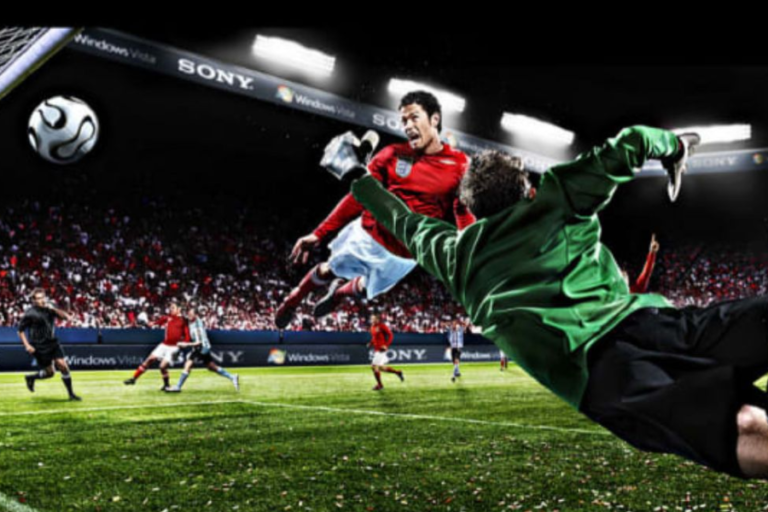Understanding the Growth of Viñlarreal: A Case Study on its Socio-Economic Development and Cultural Landscape
Viñlarreal, a mid-sized city in Spain’s Valencian Community, has undergone significant socio-economic transformation in recent decades. Known for its industrial prowess, rich cultural heritage, and thriving local football scene, Viñlarreal provides a fascinating case study of how a relatively small urban center evolves over time. In this post, we’ll break down how Viñlarreal’s growth reflects broader trends seen across similar Spanish cities, exploring key sectors like agriculture, urbanization, sports, and cultural heritage preservation.
The Historical Context of Viñlarreal’s Growth
To understand how Viñlarreal has grown and changed, we need to take a look at the history behind it. This city, with a population of approximately 50,000 residents, has deep historical roots, dating back to the 13th century during the period of the Christian Reconquista. Initially, the region was a site for agricultural development, with fertile land perfect for grapevines and the cultivation of oranges.
By the 16th century, Viñlarreal had become known for its ceramics production, which helped the city grow into a center of local craftsmanship. Over the centuries, Viñlarreal maintained a steady, if unremarkable, growth pattern, with agriculture and pottery being the primary industries. However, the industrialization wave of the 20th century sparked significant change in the city, especially in terms of urbanization, industrial development, and migration patterns.
Case Study: The Impact of Industry on Viñlarreal’s Economy
Viñlarreal’s evolution over the last 50 years can be largely attributed to the rise of industry. Historically, the city’s economy was driven by agriculture, with oranges, grapes, and ceramics as the main exports. However, from the late 20th century onward, Viñlarreal experienced a shift in its economic base, largely due to the growth of manufacturing industries.
One key aspect of this change is the development of textile manufacturing and ceramics production, which spurred job creation in the region. Viñlarreal quickly became a hub for ceramic tile production, taking advantage of the abundance of local raw materials like clay and mineral deposits. Companies like Cerámicas La Plana and Grupo Keraben established production plants in Viñlarreal, employing thousands of people and increasing the city’s output in both local and global markets. The economic shift toward manufacturing industries set the stage for other forms of growth in the region, which contributed to its current urban landscape.
According to recent data from the Spanish Ministry of Industry, the ceramics sector alone accounted for 3% of the nation’s GDP in 2023. Viñlarreal’s contribution to this sector cannot be overstated. The rise of ceramic production in Viñlarreal also sparked new educational initiatives, as local institutions began to offer specialized training in industrial design, engineering, and manufacturing technologies, preparing future generations for the jobs created by these industries.
By 2000, the city also saw substantial investment in infrastructure, including modern housing, transportation links, and commercial developments. This allowed Viñlarreal to integrate more effectively into the regional economy and take advantage of Spain’s wider economic boom at the time.
Urbanization: From Rural to Urban Growth
As Viñlarreal’s industrial sector flourished, urbanization followed. Over the last few decades, the city has transitioned from a rural, agricultural society to an urban center with more modern amenities. During the 1980s, Viñlarreal’s expansion was fueled by increasing migration from other parts of Spain, particularly from rural areas in the north and south. This influx of people was largely due to the rise in industrial jobs and the prospect of better living conditions and salaries.
Viñlarreal’s urban growth was characterized by the construction of new residential areas, commercial zones, and expanded public facilities. This period of growth peaked in the early 2000s, with the construction of the Parque de la Vila, a large urban park that symbolizes the shift toward modern public spaces. The park also represents a commitment to improving residents’ quality of life by incorporating green spaces into the urban landscape.
The city’s infrastructure growth also included the improvement of public transportation, such as the expansion of bus routes and better connections to nearby cities like Castellón and Valencia. In addition, with the rise of international trade brought on by the ceramic industry, Viñlarreal’s accessibility and connectivity became a major competitive advantage. With rail and highway connections to major industrial centers, Viñlarreal’s ability to foster both local and international commerce became central to its economic development.
A Thriving Football Scene: The Viñlarreal CF Case Study
One of the most visible aspects of Viñlarreal’s modern identity is its football club, Viñlarreal CF. Founded in 1923, the club has grown to become one of the most successful and recognized football teams in Spain. Over the years, Viñlarreal CF has consistently been part of La Liga, Spain’s top professional football division, and has even reached the prestigious UEFA Champions League semifinals.
Viñlarreal CF is an important socio-cultural force in the city, as its success has brought international attention to the city and generated significant economic benefits. The club’s achievements in European football, especially its stunning victory in the 2021 UEFA Europa League—which brought the team its first major international trophy—were major milestones in the city’s history. The global attention that comes with such successes has bolstered tourism, local businesses, and investments in the city’s infrastructure.
Viñlarreal CF has also fostered a sense of community pride among its fans. On match days, the Estadio de la Cerámica, the team’s home ground, becomes a focal point for residents and visitors alike. The stadium, which holds over 23,000 spectators, is often filled to capacity during important fixtures. The economic impact of the team can be measured not just in ticket sales and merchandise but in the ancillary effects that it has on local commerce. Restaurants, bars, and shops near the stadium see an uptick in business on match days.
The football club’s success also brought investment in the city’s youth and grassroots football programs, with Viñlarreal CF running several training academies and development centers for young footballers. These centers nurture local talent and provide opportunities for young players to hone their skills. As a result, many of Spain’s future football stars have come through Viñlarreal CF’s youth ranks, further embedding the city in Spain’s sports culture.
Preserving Cultural Heritage in a Modernizing City
While Viñlarreal has embraced its industrial and football-driven growth, it has also worked hard to preserve its cultural identity and historical heritage. The city’s cultural heritage is visible in its medieval streets, churches, and annual festivals.
One of the most significant cultural events in Viñlarreal is the Fiesta de San Pascual Baylón, a celebration that takes place every year in honor of the city’s patron saint. During this time, the streets are filled with religious processions, local music performances, and traditional dance. The event provides a glimpse into the traditional life of Viñlarreal, even as the city has modernized.
Viñlarreal’s commitment to preserving its history is also reflected in the city’s historical architecture. The Church of San Pascual Baylón, built in the 18th century, is a stunning example of Baroque-style architecture and stands as one of the city’s most important landmarks. The Plaza Mayor, another historic site, is home to several prominent buildings that display the city’s architectural evolution. By maintaining these cultural assets, Viñlarreal has ensured that its historical narrative remains integral to its identity.
Additionally, Viñlarreal’s Museo de la Cerámica is a tribute to the city’s long-standing tradition in ceramics. The museum houses collections of traditional ceramic pieces, offering visitors a deeper understanding of the city’s craftmanship and its historical connection to the global ceramic industry.
Viñlarreal’s Future Prospects: Key Opportunities for Growth
Looking to the future, Viñlarreal faces several opportunities and challenges as it continues to modernize while maintaining its cultural and industrial heritage. One area of opportunity is the further development of the technology sector. As Spain’s economy becomes more digitized, cities like Viñlarreal are positioned to take advantage of advancements in artificial intelligence, robotics, and green energy.
Another key opportunity is the expansion of tourism. Although Viñlarreal is a relatively small city, it has the potential to increase its appeal as a tourist destination. The region’s mix of history, football culture, and natural beauty could attract more visitors from both domestic and international markets. By promoting its heritage and offering new experiences for visitors, Viñlarreal could see continued growth in the tourism sector.
In conclusion, the evolution of Viñlarreal over the past few decades reflects many broader trends in Spain’s economic and cultural development. From its historical roots in agriculture and ceramics to its modern-day success in football and industry, Viñlarreal is a microcosm of how small cities can grow and evolve in today’s globalized world. As it continues to evolve, it will undoubtedly serve as an example of how history, culture, and modern industry can blend seamlessly in a rapidly changing world.
Also Read: AJ Hawk Kids Journey: Insights into His Family Life
Conclusion
In conclusion, the growth and transformation of Viñlarreal exemplify the dynamic interplay between industry, culture, and urbanization in modern Spain. From its humble agricultural beginnings to its industrial expansion and cultural preservation, Viñlarreal has managed to strike a balance between progress and tradition. The city’s thriving ceramic industry, expanding football culture through Viñlarreal CF, and efforts to safeguard its rich heritage demonstrate its resilience and adaptability. Looking forward, Viñlarreal’s future prospects, especially in technology and tourism, hold significant promise. As the city continues to evolve, it serves as a model for small cities around the world, showcasing how local identity can thrive alongside modernization.
Stay informed with the news and updates on Fames Radar THANK YOU!

